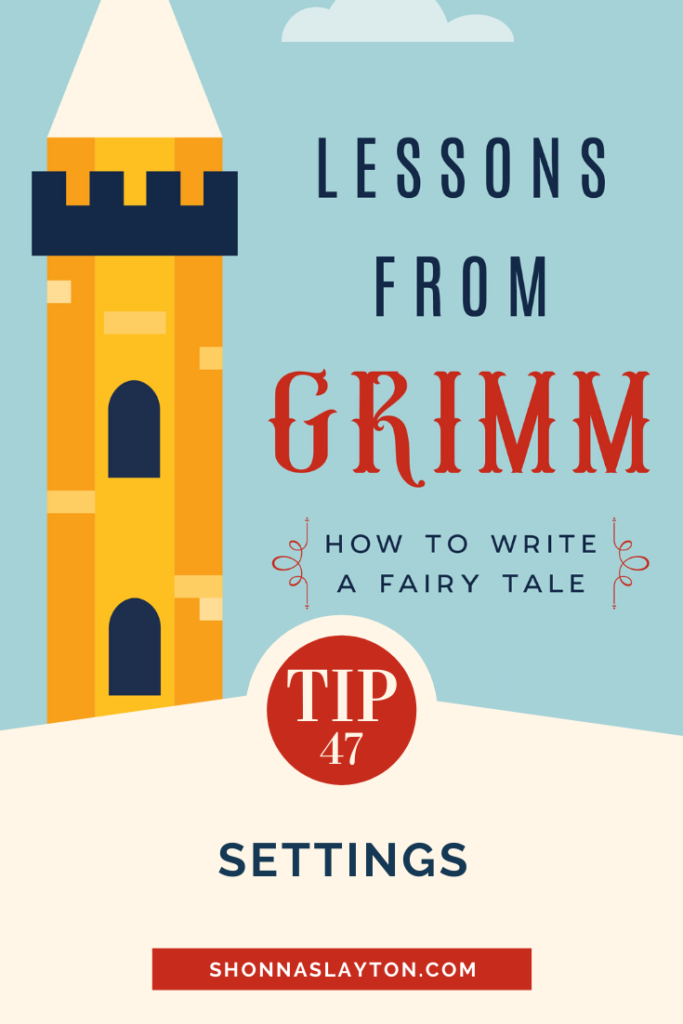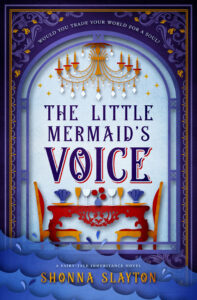This week for our reading challenge, I was having trouble deciding which story to talk about. They were all so varied, yet interesting in their own rights. I looked for a commonality that I could talk about, and then realized I haven’t talked about setting yet!
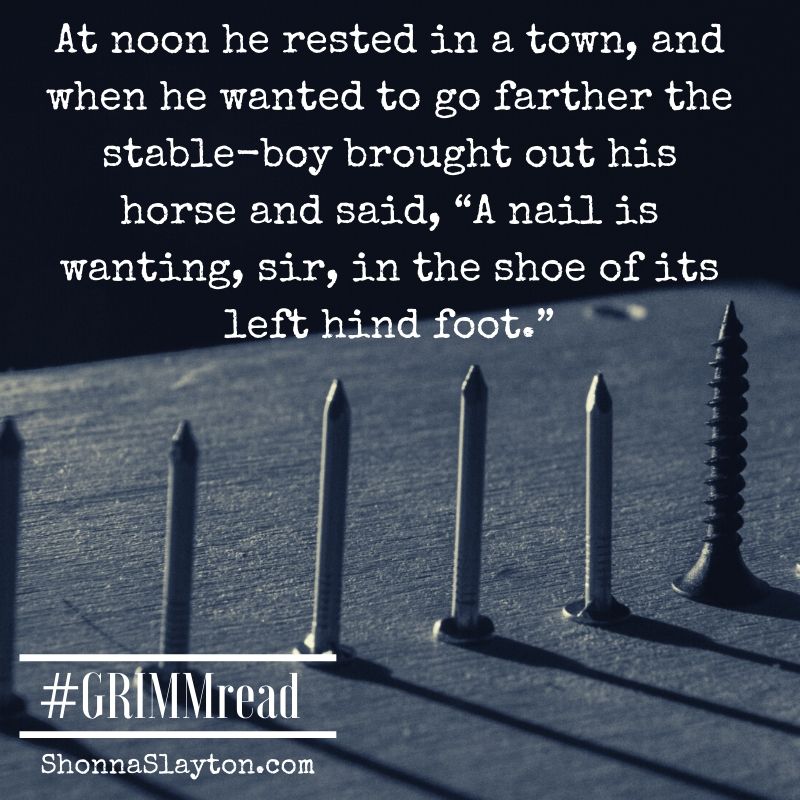
Here are the settings from this week’s stories:
- Road home from the fair (The Nail)
- House of a rich farmer, a judge’s house, and then a churchyard (The Poor Boy in the Grave)
- Stepmother’s house, a pond, a valley, a castle (The True Bride)
- A farm with turnip and cabbage patches (The Hare and the Hedgehog)
As you can see from only these four stories, Grimm settings span from the basic of places (gardens and graves) to the grander valleys and castles. Often, settings can become characters themselves, or they can have a transformative part in the plot or character development.
A road
The road home from the fair: A merchant is riding home on his horse. When he stops, a stable boy points out that his horse is missing a nail. The merchant ignores the implication that he needs to fix it, and off he goes, subsequently losing the shoe and then, ultimately the horse.
Roads indicate journeys, hardship, transformations. Pointed in one direction, there is oft no going back, the characters must plow ahead, dealing with whatever comes their way.
Several of Grimm’s stories take place on the road between two places. Think of going from the old life to the new (Goose Girl) and what tragedy or life lesson can happen along the way.
Rich homes / Grave

In fairy tales, rich homes are often paired with themes of greed and selfishness. In the story The Poor Boy in the Grave, an orphan is sent to live with a rich couple, but they treat him terribly, beating him when he makes any mistake; starving him so he is so thirsty he eats two grapes from a basket he delivers to a judge. In the end, he (ironically and almost comically) tries to kill himself by eating and drinking the best honey and wine which he has been told not to touch because they are poison. Drunk, he lies down in a fresh grave waiting to die. Can you smell the freshly dug dirt? Taste the grit in your teeth?
Stepmother’s home / pond / valley / castle
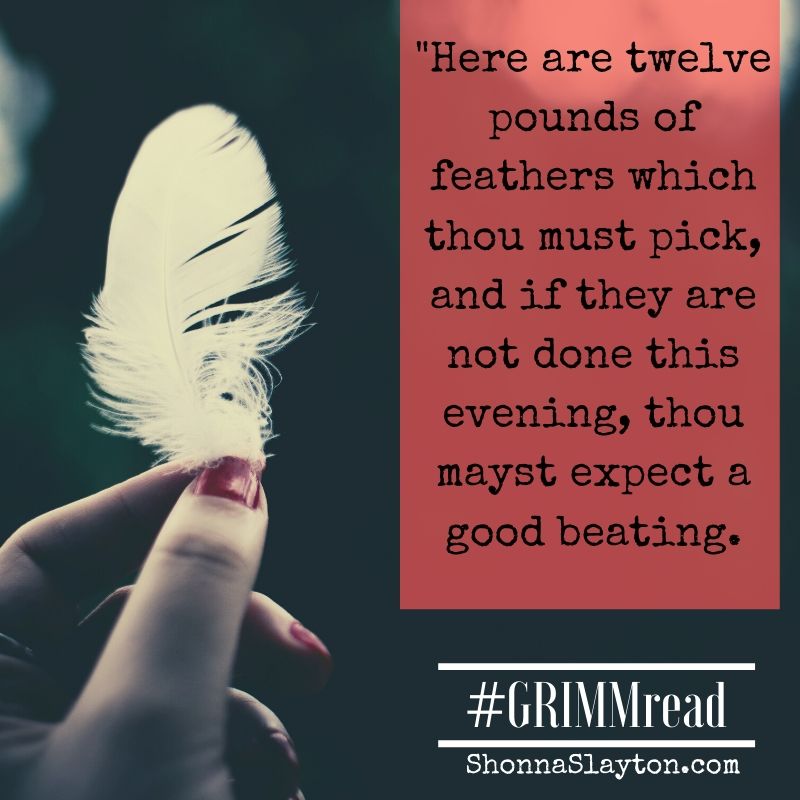
In fairy tales, living in a home with a stepmother indicates hardship for the young main character. The main character, usually a girl and sometimes outright referred to as a “cinderella”(lowercase), is generally overworked and often beaten. It’s a home with little love and plenty of toil.
Ponds—often a place where something is hidden or a place where items are lost until they are found (keys or rings for example). A place where magic happens (people transform, magical fish dwell, nixies lie in wait)
Valley—a place of testing, a place of mystery
A castle signals a kingdom and royalty and all the trappings that go along with that. It signals a balance of power and often a reversal of fortune for the main character. Sometimes there are wise and kind rulers. Other times, oblivious rulers. Not many outright evil rulers in the Grimm stories.
Garden of turnips and cabbage
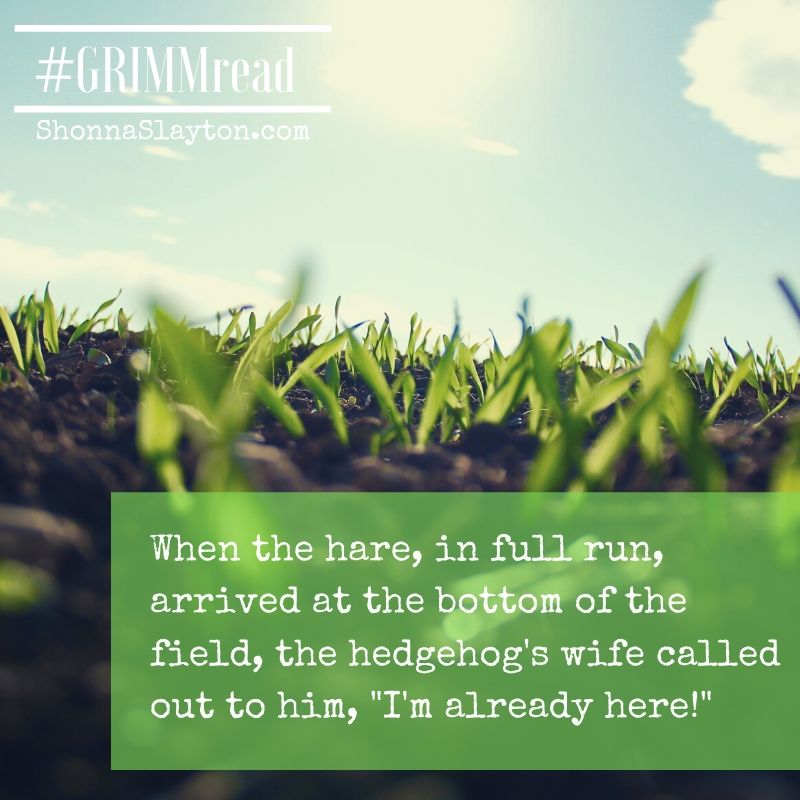
A garden is a symbol of life, of plenty. In this story, which is a twist on the tortoise and the hare fable, the two main characters are well fed and proud. The hare challenges the hedgehog to a race, and the wily hedgehog figures out how to win every time. His trick relies on the furrows in the garden. Setting, in this story, is vital to set up the twist.
Here is a partial list of other settings in Grimm:
- Cottage in the Woods
- Robber’s Den
- House deep in the woods
- Hill
- Under a tree
- Lake
- Enchanted Castle
- Little hut near the water
- Meadow
- River
- Inn
- Well
- Mountain (including mountains made of glass or gold)
- Street paved with gold
- Hell
- Heaven

